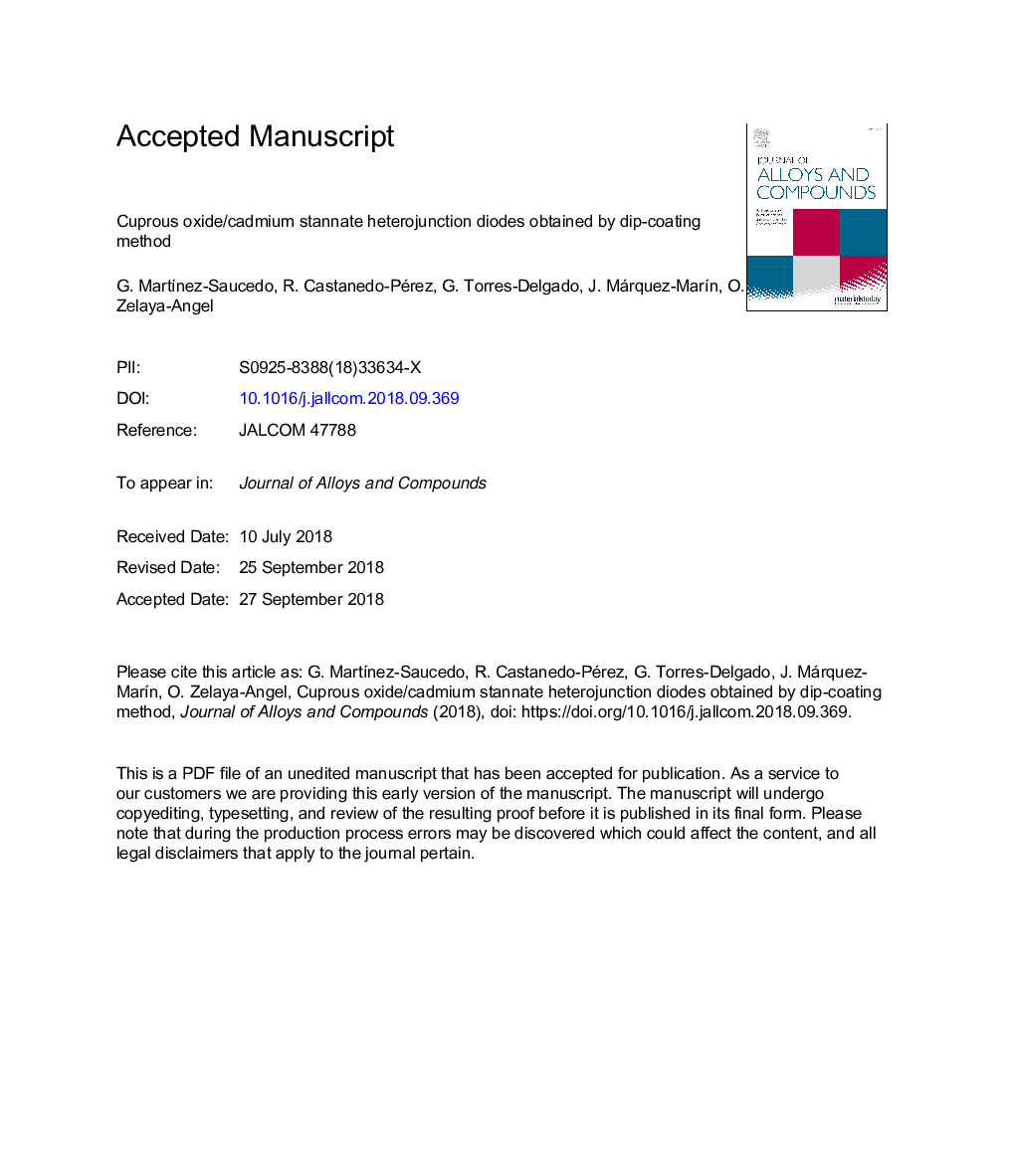| Article ID | Journal | Published Year | Pages | File Type |
|---|---|---|---|---|
| 11015763 | Journal of Alloys and Compounds | 2019 | 21 Pages |
Abstract
The fabrication of p-n heterojunction diodes using semiconducting metal-oxides obtained from a solution-based method was investigated. Initially, n-type transparent cadmium stannate (Cd2SnO4) conducting films were deposited by the dip-coating method on glass substrates. The films were sintered in air for 1â¯hâ¯at 550â¯Â°C and annealed in vacuum for 10â¯minâ¯at 550â¯Â°C. A low resistivity value was obtained (Ïâ¯ââ¯2 à 10â3â¯Î©-cm) for films with average thickness of â¼Â 380â¯nm. For the p-type layer, cupric oxide (CuO) was deposited using the dip-coating method over the transparent conductive oxide. Several layers were deposited and a drying process in air was applied at 250â¯Â°C for each coating. CuO thickness (Ï) was in the 49-270â¯nm range as the number of coats varied from 5 to 14. After that, the samples were subjected to a rapid thermal annealing treatment (RTA) in vacuum during 10â¯minâ¯at a temperature TA, within the 300â¯Â°Câ¯â¤â¯TAâ¯â¤â¯450â¯Â°C range, depending on Ï, to reduce the CuO phase into the cuprous oxide (Cu2O) phase. Cu2O has shown a better crystalline quality and lower resistivity than CuO, obtaining a more efficient charge transport. From the X-ray diffraction patterns obtained from the heterojunction, the presence of Cd2SnO4 is confirmed. The CuO layer after RTA treatment shows three different types of films, depending on both TA and Ï: i) CuO (amorphous)+Cu2O, ii) Cu2O and iii) Cu2O + Cu. Specular reflectance measurements were performed to show the presence of amorphous CuO and to confirm the full transformation from CuO to Cu2O. Current-voltage measurements were performed using silver paste on Cd2SnO4 and a graphite probe on the copper oxide layer, as ohmic contacts. All heterojunctions with a copper oxide layer of â¼Â 49â¯nm, show an ohmic behavior. For higher Ï, independent of the type of copper oxide film, a rectifying behavior is shown, which improves as Ï increases and only the Cu2O phase is obtained. Best rectification is achieved in samples with â¼Â 270â¯nm of Cu2O at TAâ¯=â¯425â¯Â°C. In this work, as far as we know, for first time Cu2O/Cd2SnO4 diodes were fabricated using the dip-coating method. The electrical parameters for the best rectification were: ideality factor (n=â¯4.8), saturation current density (J0â¯=â¯3.20 à 10â5 A/cm2) and turn-on voltage (Vtoâ¯=â¯1.1â¯V).
Related Topics
Physical Sciences and Engineering
Materials Science
Metals and Alloys
Authors
G. MartÃnez-Saucedo, R. Castanedo-Pérez, G. Torres-Delgado, J. Márquez-MarÃn, O. Zelaya-Ángel,
